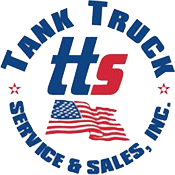For Connection To The Vehicle Identification Prover® (V.I.P.®) System
Scully and Bayco FloTech
T.I.M. Description
The T.I.M. is basically an industrial computer chip which stores a unique serial number.
Scully and Bayco FloTech
T.I.M. Description
The T.I.M. is basically an industrial computer chip which stores a unique serial number.
Unit of Measure
Package Type |
N/A Each |
Units Per Package |
N/A 1 |
Manufacturer |
N/A Dixon Bayco FloTech |
Vendor Item # |
N/A FT470 |
Weight |
N/A .25 lb |
Scully Model |
N/A SCU08836 |
Installation |
N/A The T.I.M is mounted within the overfill prevention socket housing. The T.I.M. is mounted using an existing socket mounting bolt. Both the T.I.M mounting bracket and ground wire ring terminal are secured with this bolt. The violet colored wire is connected to pin number nine of the socket contact assembly. After wiring, the exposed silver jumper wire is cut to activate the T.I.M After activation, the T.I.M.will not operate if removed from the vehicle socket. However, an activated T.I.M does not prevent replacement of the socket faceplate. |
Registering the T.I.M. Serial Number |
N/A The T.I.M. serial number is read by terminal operators using a hand held computer with an attached adaptor plug. This plug is connected to the truck socket The unique serial number is then entered into the Scully V.I.P. rack control unit through software via a terminal PC. loading controller or terminal automation system. Once registered. the serial number is read automatically each time you load. |
System Operation |
N/A
A tank truck enters the bay for loading and the driver attaches the loading rack overfill prevention plug to the socket. The serial number in the T.I.M is read by the Scully V.I.P control unit. The number is checked for meeting vapor tightness certification and other requirements. The overfill sensors and grounding status are also verified at the same time by their corresponding rack controls. If all safety criteria is met. the truck is authorized to load. Terminal managers at their discretion also have the ability to authorize loading of trucks not yet equipped with a T.I.M. They also may provide a temporary bypass in the event of a system failure. This ensures that only certified trucks may obtain a load. |
